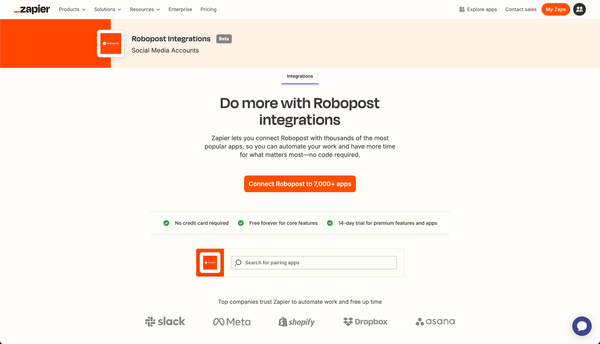Creating Viral Content: Secrets of Social Media Success
Discover how to craft viral content with our guide on leveraging emotions, storytelling, and social media for success.

Creating content that grabs people's attention and spreads widely is a top goal for social media marketers and creators. Making content go viral involves understanding human psychology, how social media algorithms work, and how to create compelling content. This article explores how to make content that connects with audiences, gets noticed by the media, and takes advantage of social sharing to boost engagement to new heights.
Key Takeaways
- Learn how viral videos develop and how social media algorithms boost content that starts gaining popularity.
- Create content that appeals to universal emotions, uses storytelling and humor, and encourages audience interaction to increase shares.
- Select the best platform for your content and use data to continually improve your strategy for ongoing engagement.
Unlocking the Secrets of Viral Videos
Understanding the Viral Video Lifecycle
The journey of a viral video starts when it's created and uploaded, where creativity meets the chance to go viral. This is the moment that sparks interest and sets up the potential for a social media hit.
As the video begins to gain attention, it's the early shares from a dedicated audience that can help it reach a wider group. This is the important point where the content can either fade away or catch on and become widely popular.
The success of a viral video isn't just about the numbers; it's about the stories and connections it creates. The most memorable viral videos make a lasting impression on their audience, encouraging them to share the experience.
The Role of Social Media Algorithms
Understanding social media algorithms are important for marketers. These algorithms consider factors like user interaction, relevance, and how recent the content is to decide what appears in a user's feed. Knowing how these algorithms work is key to creating viral content, as they can either boost or limit your posts' visibility.
- User Engagement: Likes, comments, and shares show the algorithm that the content is popular and engaging.
- Relevance: Content that matches a user's interests is more likely to show up in their feed.
- Timeliness: Newer posts usually get more priority to keep feeds current and interesting.
Social media algorithms have a big impact on how content is distributed. They can reinforce existing biases, so it's important for creators to understand and manage these biases.
Crafting Content to Hook, Surprise, and Resonate
To create content that truly grabs attention, you need to master the art of the hook. A hook can be a catchy phrase, a thought-provoking question, or a surprising fact that makes people want to learn more and engage with your content. It’s the initial spark that catches their interest and draws them in.
After you’ve captured their attention, the next step is to surprise them. This doesn’t have to be a dramatic twist; it can be a fresh perspective or an unexpected detail that makes your content stand out. Surprises keep your audience interested and curious about what comes next.
The Anatomy of a Viral Hit
Tapping into Universal Emotions
At the heart of every viral hit is the ability to stir emotions that resonate with a broad audience. Your content needs to connect with universal emotions to encourage social sharing. This connection should go beyond a quick reaction; it should create a deep, personal bond that makes viewers want to share their experience with others.
Emotions not only drive us to share but also to engage more deeply with what we’re watching. Videos that evoke feelings like joy, surprise, sadness, or outrage often become the center of social media buzz. Here are some emotions that commonly drive viral content:
- Joy
- Surprise
- Sadness
- Outrage
Understanding what emotional triggers lead to content being shared is crucial. Content that creates strong emotional responses is more likely to be shared and remembered, making it essential for going viral. Research shows that admiration, happiness, and love are among the most common emotions in viral content, highlighting the impact of positive emotional engagement.
The Power of Storytelling and Humor
At the heart of viral content is the power of storytelling and humor. A good story can turn a simple video into something people want to share, grabbing their attention and encouraging them to spread it. Humor, being something everyone understands, quickly connects with viewers, making the content more memorable and shareable.
- Use scenarios that your audience can relate to.
- Create a clear structure with a beginning, middle, and end.
- Add personality and authenticity to make your content stand out.
By using personal stories and timely topics, content creators can build a shared experience that resonates with their audience. This not only keeps viewers engaged but also makes them more likely to share the content and become enthusiastic supporters of the brand.
Encouraging Audience Participation
Audience participation is key to making content go viral, turning viewers from passive watchers into active promoters. Encourage your audience to create and share their own content, which can boost sharing within their networks. Here’s how to get them involved:
- Share personal stories to give context and make people feel connected.
- Ask questions that encourage people to share their own stories or opinions.
- Respond to every comment to keep the conversation going.
Timing is just as important as content. By studying when and how your audience engages, you can adjust your strategy to fit their preferences. This approach can greatly increase the impact of your content. Tools like Robopost help you schedule when to post.
Leveraging Platforms and Tools for Viral Success
Choosing the Right Platform for Your Content
When creating content, picking the right platform is key. It's not just about where you post but making sure your content matches what the platform's audience likes. First, figure out your niche and where your target audience spends their time. For example, if your content is quick and visual, Instagram and TikTok might be ideal. For detailed tutorials or stories, YouTube could be a better fit.
Choosing the right platforms can be tricky as new ones keep emerging. But if you focus on where your content will stand out and stay flexible, you'll have a better chance of going viral.
Here’s a simple guide to get started:
- Step 1: Choose 1-2 main platforms based on where your audience is.
- Step 2: Adjust your content to match the platform’s style and format.
- Step 3: Watch trends and be open to experimenting with your content.
Customizing Content and Using Analytics
To achieve viral success, it’s important to customize your content for each platform. Different social media sites have different audiences and preferences. For example, content that works on Instagram might not work on LinkedIn. You need to adjust your strategy to match each platform’s unique style and user behavior.
To improve your approach, use social media analytics tools to monitor how your content performs. Metrics like engagement rates, reach, and impressions offer useful insights into what your audience likes. Here’s a simple guide to help:
- Check engagement metrics to see what grabs attention.
- Track sharing patterns to gauge how far your content spreads.
- Analyze audience demographics to refine your messaging.
Also, keep an eye on viral challenges and trends—they can greatly increase your visibility. Just make sure your participation feels genuine and fits with your brand’s voice.
Iterative Process for Content Refinement
Once your content is posted, the real work starts. It’s important to analyze feedback and make changes as needed. It’s not just about the number of likes and shares, but about understanding why people react the way they do.
Your content strategy should change based on what you learn. This data-driven approach is crucial for achieving your social media goals. Here’s a simple guide to help refine your content:
- Review feedback and engagement metrics from your audience.
- Look for patterns and trends in the data.
- Modify your content based on these insights to better match what your audience likes.
- Test new strategies and see how they perform.
Regularly improving your content is key to keeping it engaging and effective. Balance your creativity with audience feedback, and always do the research needed to keep your content relevant.
Conclusion
To achieve viral success, we’ve looked at how content creation and audience engagement work together. From understanding how content goes viral to using emotions and platform-specific strategies, getting viral is both an art and a science. Although you can't guarantee virality, combining relatable storytelling, smart media coverage, and refining your approach based on analytics can improve your chances. Remember the importance of social media algorithms, creating emotionally resonant content, and having high production values. By using these tips, you'll not only aim for viral success but also build a community that eagerly looks forward to your next great content. So, create with purpose and let the digital world spread your message.
